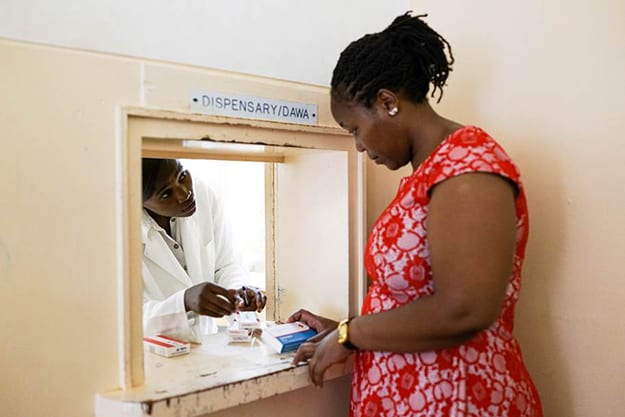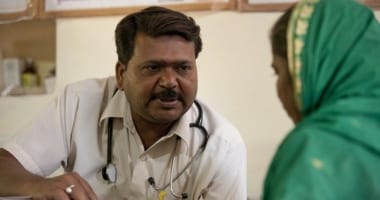Access to healthcare is making controversial headlines these days as the report of the High-Level Panel on Access to Medicines set up by the Secretary-General of the United Nations was just released. We need to move away from ideological disputes about intellectual property and focus on how we can help patients receive the treatments they need now.
Any solution to the access challenge needs to consider the complex factors that affect access in developing countries. It would indeed be misleading and counter-productive to focus the access debate on patents. Ninety-five percent of the drugs on the World Health Organization’s Essential Drugs List are not patented, yet many millions of patients in poor countries have no access to them. Sometimes it is because they cannot afford these medicines, but equally often it is because a clinic is a day’s walk from their home, or there is no doctor at the clinic to give them a diagnosis, or the local pharmacy does not have the treatment in stock.
A myriad of obstacles prevent patients in poor countries from getting the medicines they need, and eliminating patents would not overcome the problem. An effective solution would be to encourage partnerships between pharmaceutical companies and governments or other healthcare providers to help make medicines, both patented and generics, accessible and affordable to patients in poor countries.
Some of these partnerships are already showing results. In Kenya, at least four pharmaceutical companies are selling their treatments against chronic diseases at prices far below those charged in Europe and North America as part of wide-ranging agreements with governments and other healthcare providers. Guaranteed volumes and a promise of long-term collaboration can make this an attractive, sustainable model for many companies.
Our company, for example, is working with governments and NGOs to deliver affordable treatments, including innovative medicines against chronic diseases, to the poorest people in the world. In many poorer countries, these diseases are beginning to overtake infectious diseases as the main cause of death and disability. Launched in Kenya last year, Novartis Access offers a portfolio of on- and off-patent medicines that we plan to make available to 20 million patients in low and lower-middle-income countries by 2020. The treatments include medicines against cardiovascular diseases, type 2 diabetes, breast cancer and respiratory illnesses. The portfolio costs governments and public-sector customers USD 1 per treatment per month. We are working with our partners on the ground to ensure the end price paid by patients is kept at a minimum. In Kenya, the end price should not exceed USD 1.50 per treatment per month. We are also investing in education and training for workers in healthcare systems that have until recently been heavily focused on treating infectious diseases.
This will not help unless we also improve the local availability in these countries. A recent WHO survey of 40 lower-income countries showed that, in the public sector, a range of essential generic medicines for the treatment of acute infectious diseases were only available in just over half of the pharmacies and clinics. For chronic diseases, only a third of the medicines were available. Lack of trained staff, poor infrastructure, poor data systems, and diversion of subsidized medicines from the public to the private sector are all factors contributing to this situation.
We think Novartis Access can help transform the lives of people in many poor communities – because improved health systems and access to high-quality treatment triggers a virtuous cycle of better, longer and more productive lives, and encourages people to invest more in their individual health. To assess if the program is delivering on its ambition, we are working with a highly-respected independent team from Boston University led by Professor Richard Laing to evaluate its impact on the ground in Kenya. We have asked them to publish what they find, positive and negative.
We do not pretend we have a universal solution to improving access to medicines, but we think we are providing a compelling example of how the pharmaceutical industry can work collaboratively to help overcome access issues in poor countries. Other companies are also doing excellent work in this area. We look forward to the time when this type of approach is the norm rather than the exception.




